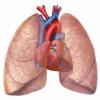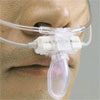Tag: ventilation

Limited predictability of maximal muscular pressure using the difference between peak airway pressure and positive end-expiratory pressure during proportional assist ventilation (PAV)
Deducing maximal muscular pressure from ΔP during PAV has limited accuracy. The extrapolated pressure time product from ΔP is usually less than the pressure time product calculated from oesophageal pressure tracing.... read more

Recruitment manoeuvres for adults with acute respiratory distress syndrome receiving mechanical ventilation
Ten trials met the inclusion criteria for this review (n = 1658 participants). We found five trials to be at low risk of bias and five to be at moderate risk of bias.... read more

Cricoid Pressure at Lower Forces Does Not Increase Oxygen Consumption
A pilot study has found that patients randomly assigned to cricoid pressure or sham treatment showed no difference in time to lowest peripheral capillary oxygen saturation (SpO2) or lowest SpO2 during anesthesia induction... read more

Spontaneous breathing trial and post-extubation work of breathing in morbidly obese critically ill patients
Predicting whether an obese critically ill patient can be successfully extubated may be specially challenging. Several weaning tests have been described but no physiological study has evaluated the weaning test that would... read more

New Guidelines for Discontinuing Mechanical Ventilation in the ICU
The goal of the guidelines is to help physicians and other healthcare professionals determine when patients with acute respiratory failure can breathe on their own and to provide clinical advice that may increase the chances... read more

High-Flow Oxygen Not Inferior for Averting Reintubation
For high-risk critically ill patients who have undergone extubation, high-flow conditioned oxygen therapy is not inferior to noninvasive mechanical ventilation.... read more

Capnography best practices to improve patient handoff reports
Use these documentation and handoff tips to communicate important patient information to ED and ICU staff unfamiliar with capnography. Waveform capnography is an example of EMS as an early adopter of emerging technology.... read more








